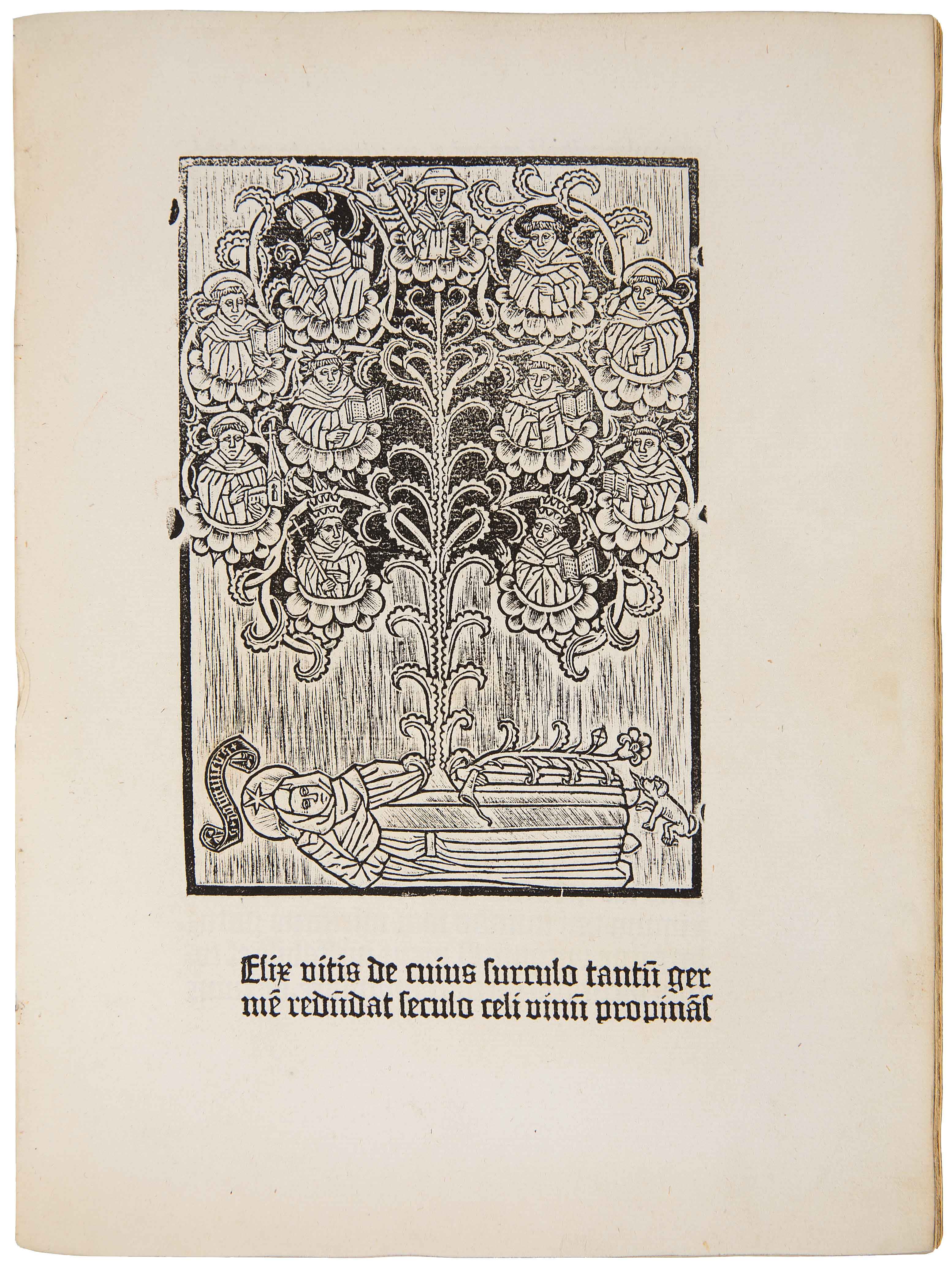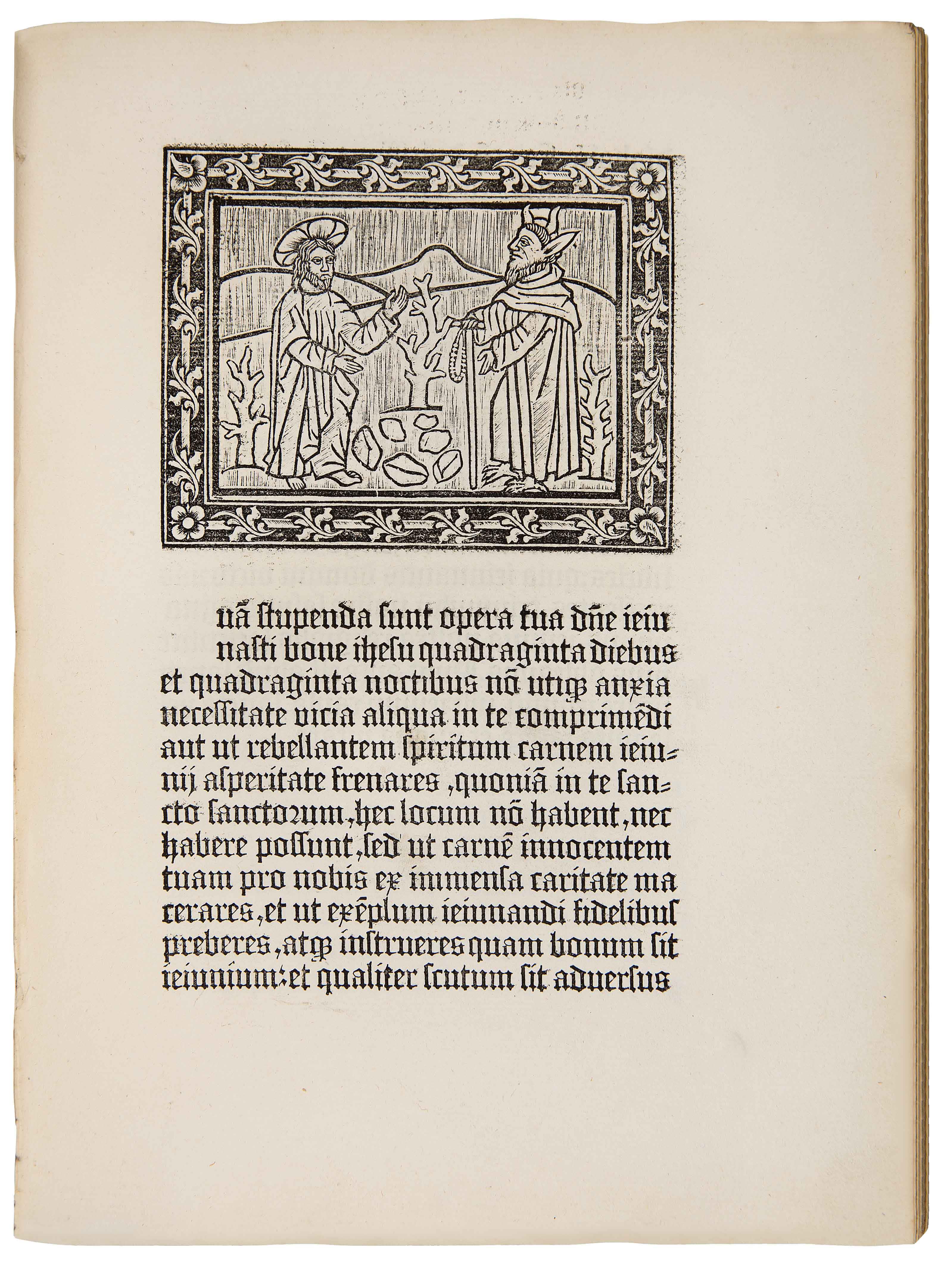
In our newest blogpost, Oxford Dphil. cand. Eduardo Benítez-Inglott y Ballesteros, discusses the author of the Meditationes seu contemplationes devotissimae, Cardinal Juan de Torquemada. One of the most outspoken papal apologists at the height of the ecumenical councils of the early fifteenth century, he also advocated for the rights of Jewish converts in the Spanish Crown of Castile. We are delighted to be able to offer the first edition of the Meditationes seu contemplationes devotissimae using metalcuts, printed in Mainz by Johann Numeister.
Cardinal Juan de Torquemada, O.P. [Latinised: Iohannes de Turrecremata] was one of the most outspoken papal apologists at the height of the ecumenical councils of the early fifteenth century. During a difficult era for Jews who had converted to Christianity in the Spanish Crown of Castile (conversos), he also advocated for their rights in society.
He was born in Valladolid in 1388, though it is unclear if he had Jewish ancestors. A novice at the city’s convent of San Pablo, he moved to Salamanca to finish his studies and then held leadership positions in his native house and in the convent of San Pedro Mártir (Toledo). In the early 1430s Pope Eugenius IV (r. 1431–1447) appointed him Master of the Sacred Palace [Magister Sacri Palatii], that is “the pope’s theologian.” On December 18, 1439, the supreme pontiff admitted him to the cardinalate.

Tree of Jesse. Johannes de Turrecremata, Meditationes seu contemplationes devotissimae [Mainz]: Johann Numeister, 3 September 1479. Seventh edition, the fourth illustrated edition, the first with metalcuts.
Cardinal Torquemada stood as a “fidei defensor” [“defender of the faith”] at a period when a number of heresies assaulted the Catholic Church and popes fought to retain their centralised power against conciliarists’ more “federalist” approach to church governance. A Thomist who cherished reason and tradition, the Castilian prelate composed his Summa de Ecclesia contra Impugnatores Potestatis Summi Pontificis (1450–1453). He also commented bodies of canon law; the Biblioteca Apostolica Vaticana has a particularly exquisite manuscript copy (Vat. Lat. 2269) with a presentation miniature (fol. 1r) in which a very aged Torquemada, kneeling, hands Pope Paul II (r. 1464-1471) a copy of his work.

Christ tempted by the Devil in the desert. Johannes de Turrecremata, Meditationes seu contemplationes devotissimae [Mainz]: Johann Numeister, 3 September 1479. Seventh edition, the fourth illustrated edition, the first with metalcuts.
Although he took up residence in Rome, the Eternal City, he never forgot his native land. After the forced conversions of Jews in the 1390s and early 1400s, the “Old Christian” population in Castile had become increasingly resentful of conversos. In Toledo, in 1449, authorities passed the first purity of blood statute, seeking to marginalise converted Jews and their descendants. In response, in 1450 Cardinal Torquemada argued in his Tractatus Contra Madianitas et Ismælitas (Vat. Lat. 2258, fols. 165v-178v) that conversos ought to be respected because (among other things) the legitimacy of their baptism and the bond of spiritual brotherhood [“uinculum fraternitatis spiritualis”] binding conversos and Old Christians together.

The Castilian cardinal passed away in Rome in 1468. He is interred beside eminent individuals like Saint Catherine of Siena (though her head is in Siena’s Basilica Cateriniana) and the painter Fra Angelico at the stunning Basilica di Santa Maria Sopra Minerva. He had embellished the church’s fabric, and the now-lost cycle he personally commissioned for the basilica’s cloisters even inspired the fine engravings of his Meditationes seu Contemplationes Devotiossimæ, one of his most important texts. The treatise enjoyed considerable popularity and represented a landmark in the history of printing. Among other things, it was the first illustrated book printed in Mainz. More information and images of this fascinating book can be found here.
By Eduardo Benítez-Inglott y Ballesteros
About the Author

Eduardo Benítez-Inglott y Ballesteros is a doctoral student at Oxford University. His interests include theology, anthropology, manuscript studies, religious and art history, and literary studies. He is currently completing his doctoral thesis on the origins of the Spanish Inquisition. His investigation places a special emphasis on previously unpublished material from archives in the Vatican in order to comprehend the role of inquisition in the diplomatic exchanges between the Iberian kingdoms and Rome. More information about his research and contact details can be found here.


